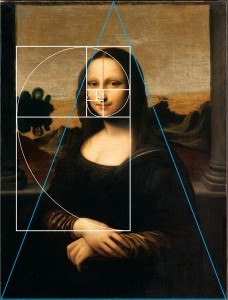 |
| Parthenon's "perfect rectangles" |
To talk about the marriage of mathematics and art, the first "artist" that comes to mind is the great Leonaro Da Vinci. Before this week's lecture, I had no idea about how the Mona Lisa was an painting that was not only famous for being Da Vinci's masterpiece, but also a work of perfect mathematical proportions. Previously, Da Vinci's artwork on the Vitruvian Man was one of the few that I could think of that had to do with mathematics and art. However, after reading a few articles and watching a few videos, I was convinced that there was more than just rudimentary math. In fact, the the Vitruvian Man's precise angles replicated the human anatomy and the orientation of the Man's limbs were based on basic geometry. These principles alone are completely mind-boggling as I thought the mathematics behind the art would not be so complex and have more than just simple mathematical implications.
 |
| Vitruvian Man |
After this week's lesson, I felt like I learned that there was more to "art" than I had previously thought. I always viewed art as something that people thought was just "pretty" or simply "good to look at". After understanding how much planning goes into the art, I have gained a new respect and understanding of how artists use mathematics in their work. For scientists; however, I feel like as opposed to using "science" to advance technology, scientists now also care about the form they present their inventions. This correlates with last week's lesson as how there is a merging between the two culture of science and art. A perfect example of that would be in my last week's post featuring the BMW 100 Vision concept model.
Based on what I have learned this week (in addition to what I have learned last week), the juxtaposition between mathematics, art, and science is simple. Science is based off of mathematics, so there really is no difference in that aspect. However, mathematics/science was never not associated with art. From Renaissance times' paintings or ancient Greek monuments to modern day inventions, art has always been hand-in-hand with mathematics. Despite people may view mathematics and art as two distinct principles, it is clear that, with so many examples, that mathematics and art coexist together.
 |
| The paramount of art and mathematics in one painting |
Citations / Links:
- Earle, James. "Da Vinci's Vitruvian Man of Math - James Earle." TED-Ed. Web. 11 Apr. 2016.
- "TITLE." Golden Section in Art and Architecture. Web. 11 Apr. 2016.
- Meisner, Gary. "Divine Proportion/Golden Ratio in the Art of Da Vinci." The Golden Ratio Phi 1618. 2014. Web. 11 Apr. 2016.
- Parveen, Nikhat. "MATHEMATICS AND ART." MATHEMATICS AND ART. Web. 11 Apr. 2016.
- "Proportion: DaVinci's 'Vitruvian Man'" Proportion: DaVinci's 'Vitruvian Man'Web. 11 Apr. 2016.
- "Does the 'Earlier Version' Display Leonardo's Mathematical Principles? - The Mona Lisa Foundation." The Mona Lisa Foundation. 2012. Web. 11 Apr. 2016
- https://www.dartmouth.edu/~matc/math5.geometry/unit14/unit14.html
- http://www.brighthubeducation.com/middle-school-math-lessons/59950-math-and-leonardo-da-vinci-the-golden-ratio/
- http://mathcentral.uregina.ca/beyond/articles/Art/art1.html
- http://www.ams.org/samplings/feature-column/fcarc-art1
- http://www.maa.org/meetings/calendar-events/math-and-art-the-good-the-bad-and-the-pretty
- https://www.sciencenews.org/article/when-art-and-math-collide
Hey Chris!
ReplyDeleteI can totally relate to your previous viewpoint on art as something people think of as just "pretty" or aesthetically pleasing. I also shared much of that perception before going through the materials from this week's lesson. I also really enjoyed your explanation of the simple juxtaposition between math, art, and science because it truly does seem that all three have always been intertwined. The examples you mentioned here are a great example of the continuous interplay between all three categories as they range between various time periods: from the Parthenon to the Mona Lisa to the more futuristic BMW 100 Vision concept model. It just goes to show that math, art, and science inevitably link together.